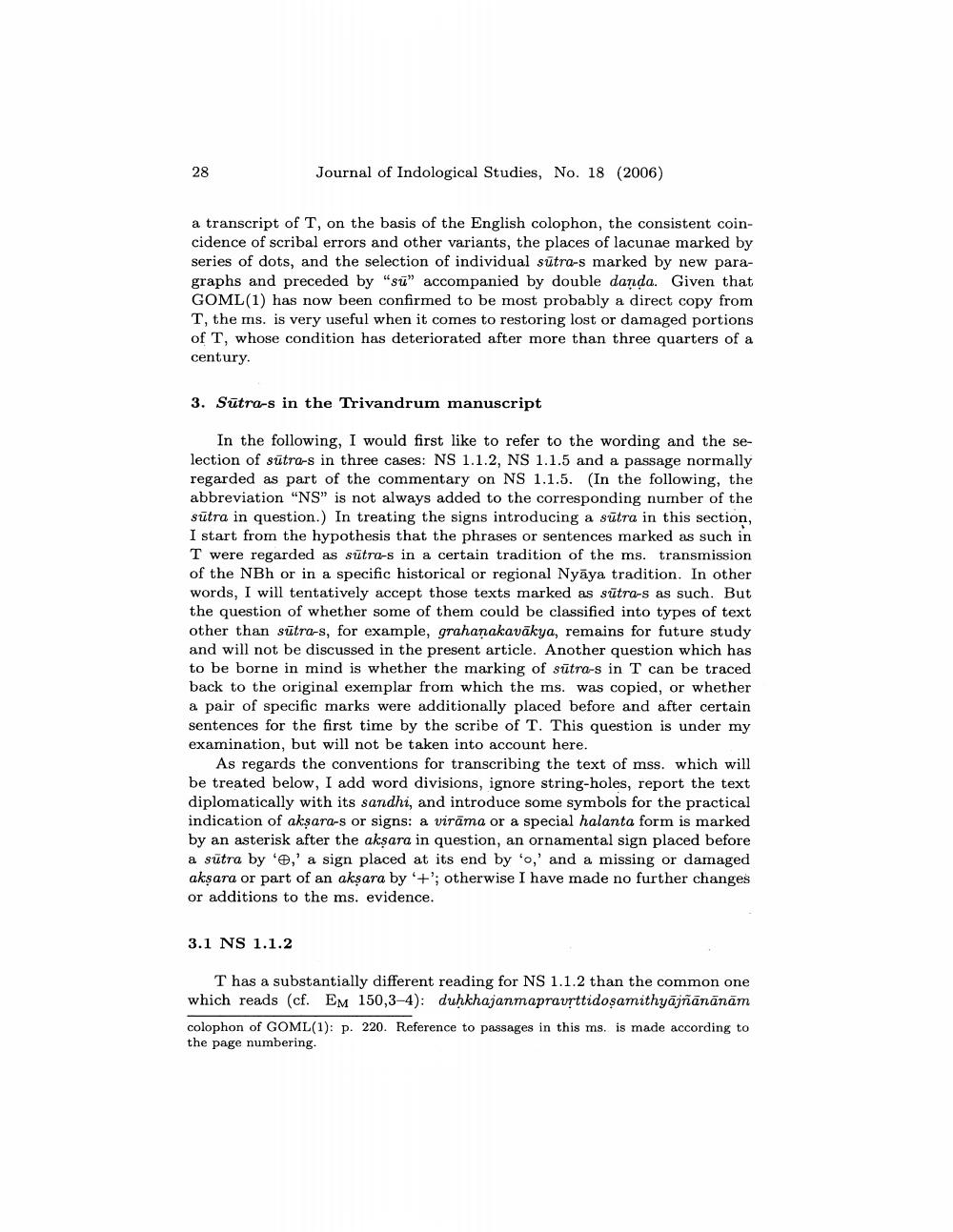Book Title: Some Observations On Manuscript Transmission Of Nyayabhasya Author(s): Yasutaka Muroya Publisher: Yasutaka Muroya View full book textPage 6
________________ Journal of Indological Studies, No. 18 (2006) a transcript of T, on the basis of the English colophon, the consistent coincidence of scribal errors and other variants, the places of lacunae marked by series of dots, and the selection of individual sutra-s marked by new paragraphs and preceded by "sū" accompanied by double danda. Given that GOML(1) has now been confirmed to be most probably a direct copy from T, the ms. is very useful when it comes to restoring lost or damaged portions of T, whose condition has deteriorated after more than three quarters of a century. 3. Sūtra-s in the Trivandrum manuscript In the following, I would first like to refer to the wording and the selection of sutra-s in three cases: NS 1.1.2, NS 1.1.5 and a passage normally regarded as part of the commentary on NS 1.1.5. (In the following, the abbreviation "NS" is not always added to the corresponding number of the sūtra in question.) In treating the signs introducing a sutra in this section, I start from the hypothesis that the phrases or sentences marked as such in T were regarded as sutra-s in a certain tradition of the ms. transmission of the NBh or in a specific historical or regional Nyāya tradition. In other words, I will tentatively accept those texts marked as sūtra-s as such. But the question of whether some of them could be classified into types of text other than sutra-s, for example, grahanakavākya, remains for future study and will not be discussed in the present article. Another question which has to be borne in mind is whether the marking of sutra-s in T can be traced back to the original exemplar from which the ms. was copied, or whether a pair of specific marks were additionally placed before and after certain sentences for the first time by the scribe of T. This question is under my examination, but will not be taken into account here. As regards the conventions for transcribing the text of mss. which will be treated below, I add word divisions, ignore string-holes, report the text diplomatically with its sandhi, and introduce some symbols for the practical indication of akşara-s or signs: a virāma or a special halanta form is marked by an asterisk after the aksara in question, an ornamental sign placed before a sutra by 'e,' a sign placed at its end by 'o,' and a missing or damaged aksara or part of an aksara by '+'; otherwise I have made no further changes or additions to the ms. evidence. 3.1 NS 1.1.2 T has a substantially different reading for NS 1.1.2 than the common one which reads (cf. EM 150,3–4): duḥkhajanmapravsttidosamithyājñānānām colophon of GOML(1): p. 220. Reference to passages in this ms. is made according to the page numbering.Page Navigation
1 ... 4 5 6 7 8 9 10 11 12 13 14 15 16 17 18 19 20 21 22 23 24 25 26 27 28 29 30 31 32 33 34 35 36 37 38 39 40 41 42
